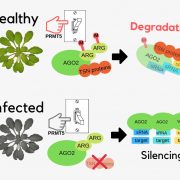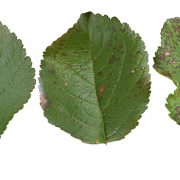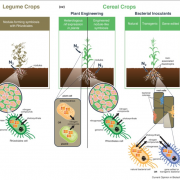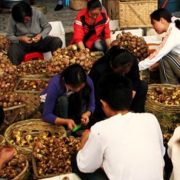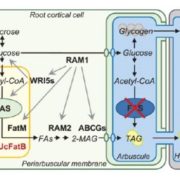The genetic architecture of colonization resistance in Brachypodium distachyon to non-adapted stripe rust (Puccinia striiformis) isolates (PLOS Gen.)
 The host range of a pathogen depends on its ability to overcome various plant defense barriers and successfully complete its life cycle. Although host “jumps” are considered rare, the pathogens are able to infect plants other than their usual host with varying degree of success. Yellow stripe rust (P. striiformis) is usually feasting on wheat and barley, and can colonize but is not able to complete its life cycle on the wild grass Brachypodium distachyon. Bettgenhaeuser et al. aimed to understand the genetic architecture restricting colonization by yellow stripe rust by screening three B. distachyon mapping populations. Two major effect QTLs conferring Yellow rust resistance (Yrr1 and Yrr3) conferred resistance to diverse yellow rust isolates. Yrr3 contained immune receptors from the nucleotide-binding leucine-rich repeat (NB-LRR) family, which are also found in the adapted host systems. This study suggests that the resistance to adapted and non-adapted pathogens might not be that different. (Summary by Magdalena Julkowska) PLOS Gen. 10.1371/journal.pgen.1007637
The host range of a pathogen depends on its ability to overcome various plant defense barriers and successfully complete its life cycle. Although host “jumps” are considered rare, the pathogens are able to infect plants other than their usual host with varying degree of success. Yellow stripe rust (P. striiformis) is usually feasting on wheat and barley, and can colonize but is not able to complete its life cycle on the wild grass Brachypodium distachyon. Bettgenhaeuser et al. aimed to understand the genetic architecture restricting colonization by yellow stripe rust by screening three B. distachyon mapping populations. Two major effect QTLs conferring Yellow rust resistance (Yrr1 and Yrr3) conferred resistance to diverse yellow rust isolates. Yrr3 contained immune receptors from the nucleotide-binding leucine-rich repeat (NB-LRR) family, which are also found in the adapted host systems. This study suggests that the resistance to adapted and non-adapted pathogens might not be that different. (Summary by Magdalena Julkowska) PLOS Gen. 10.1371/journal.pgen.1007637



